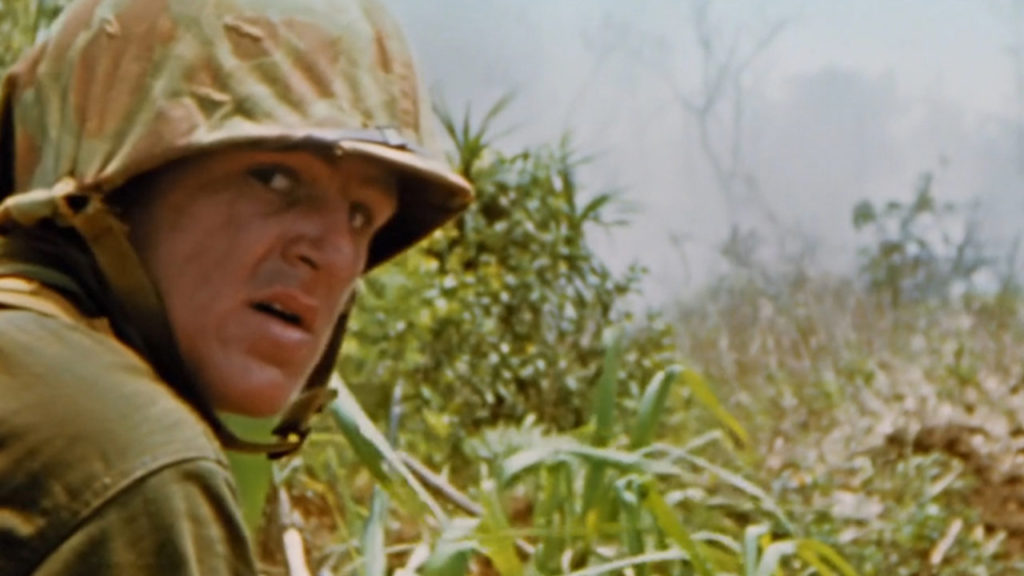
The powerful documentary Apocalypse ’45 takes never-before-seen footage of WWII action and blends it into an experience that brings new insights to familiar history.
Apocalypse ’45 takes on the war in the Pacific in 1944 and 1945; the Japanese military knew that its defeat was inevitable, and their strategy was to avoid unconditional surrender by making its price to the Americans too painful. What happened was horrible, and filmmaker Erik Nelson helps us appreciate that with his spare construction – Apocalypse ’45 is essentially three elements – the film itself, the voice over by survivors and starkly evocative titles.
First, Nelson selected from 700 reels of archival film from the National Archive, digitally restored in 4K. It’s in color, and that makes a huge difference to those of us who have to be reminded that WWII was not fought in black and white.
The color and the 4K restoration makes these events look like we were living through them, too, and humanizes the people in the film, making them more relatable. The feeling for the audience is similar to what Peter Jackson’s They Shall Not Grow Old did for those who fought WWI. The somber fatalism of Marines in landing craft and the joyous relief of sailors and Marines in victory parades are palpable.
The shipboard footage of kamikaze attacks and the pilot’s eye views of strafing missions are breathtaking. The footage of a morass with a movie clapboard “Route 1 Okinawa Mud” helps us understand the challenges of moving an army through muck, even without enemy fire.
A few nonagenarians and centenarians have still survived WWII, and Nelson adds their memories in voice overs. Their reflections are unvarnished, and some of the Marines’ views of the Japanese adversaries are hard to hear. But the overall effect is an understanding of how awful this was:
- About the planned invasion of Japan: “We didn’t think that the war would end before 1949.”
- About the use of flamethrowers: “The smell was terrible…They could run (on fire) about 20 yards and that was it.”
- “War is hell, but I never visualized hell being that bad.”
- In the amazing account of a Hiroshima atomic bomb survivor: “That’s when everything blew up.”
Nelson ties together the footage and the testimonies with stark white-on-black titles, all the more chilling by their matter of factness. About the liberation of the Philippines): “100,000 civilians and the entire defending Japanese Army were killed” (and, indeed, 93% of the 350,000 Japanese soldiers and sailors died). About the fire bombing of Tokyo: 100,000 Japanese civilians were incinerated.
Nelson’s titles tell how the US manufactured enough Purple Heart medals for the invasion of Japan, based on American casualties in the conquest of Okinawa. After the surrender, those Purple Heart medals were warehoused – and the stockpile has been sufficient to supply every American conflict since 1945.
As Apocalypse ’45 begins, it may seem like a regular WW II documentary with some new imagery, but it becomes more and more powerful as the images, personal testimonies and narrative titles have their effect.
Apocalypse ’45 is now streaming on Virtual Cinema and eventive; I watched it at the Pruneyard Cinemas. It will premiere on the Discovery Channel on Labor Day weekend.
